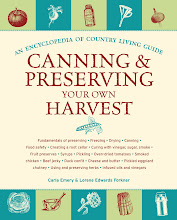I once had the opportunity to milk a cow on a small farm in Northern California. Sitting on a low stool, leaning towards the underside of the cow, I was awed by the sheer size massive mammal allowing me to glean nourishment from her body. Though I was nervous, the owner coached me through the milking and assured me that I was not hurting her in any way. It was a fascinating process and helped me to appreciate the origins of some of the food I regularly consume. Up until then, I had always just grabbed a carton of 2% milk from the refrigerator in the supermarket and thought no more of it. Considering our dependency on cattle for enriching our diets, Carla Emery encourages us to learn a bit more about cows and they way they think and behave, instead of taking them for granted.
Worldwide there are literally hundreds of beef, dairy, and dual-purpose cattle breeds and at least 35 common ones—including both dairy and beef—in the United States. Among the many breeds, cows vary wildly in gentleness from a sweet pet of a Jersey family milk cow to a huge, mean, wild range bull. All cows are powerful, however, and have the potential to do serious damage if the handler doesn’t fully understand the way they think and behave. Here is a little Cow Psychology 101 to help with safe cow handling.
Cow psychology is very much influenced by the design of a cow’s body—her senses work differently from ours, which is important to understand when handling cows.
- A cow’s strongest sense is her smell. She can smell her calf 3 or 4 miles away. A bull can smell a cow in heat that is miles away.
- Cattle have good hearing, too, and respond well to auditory cues and calls. They dislike high-pitched sounds like the crack of a whip.
- A cow has 360° panoramic vision. She can actually see beside and behind herself without turning her head. This means that she can put her hind foot into the bucket or kick it over on you and it’s not a lucky accident for her. However, cows cannot see color. Everything is black and white to them, so it doesn’t matter what you wear. They are very sensitive to stark black and white contrasts, though, and have poor depth perception. White lines painted across a road can look like a cattle guard to them. It’s hard for a cow to tell the difference between a shadow and a hole in the ground so a dark shadow can scare her into going around it.
- Your cow’s closest relative on the farm is the sheep. They’re both herd-oriented, humble animals. (For least stress and best production keep 2 or more calves or cattle.) Like sheep, cowherds form social hierarchies with a ‘boss cow’ the others follow. Large cattle herds will form smaller subherds with an order of dominance in each group.
Carla Emery’s Golden Rule for Safe Cattle Handling: Move your cattle patiently, quietly.
Cows are frightened of new places and are made nervous by changes in their daily routine. They don’t take easily to learning anything new and they actually resent being forced to do anything.
- Avoid exciting or hurrying them because a running cow does its own unpredictable thing whereas a slowly walking one is likely to go where you want. The safest and smoothest approach is true patience and a plan to outsmart rather than outfight them.
- Cows follow the leader. If you can coax the first 1 or 2 through a gate, etc., the rest are likely to follow naturally.
- To turn a cow you can make some noise and make yourself look large by waving your arms widely, but do this from an angle, not right in front of the animal because you may lose. Standing straight ahead in the cow’s way invites you getting knocked down and hurt.
- Teach your cattle to come to a certain familiar call to get a treat of grain or a bale of hay. When you feed them frequently and handle them gently they learn to trust and depend on you. Then you can call and lead them where you want. Always follow the call with the food reward or they’ll lose faith. (This, of course, works best if they’re hungry!)








No comments:
Post a Comment